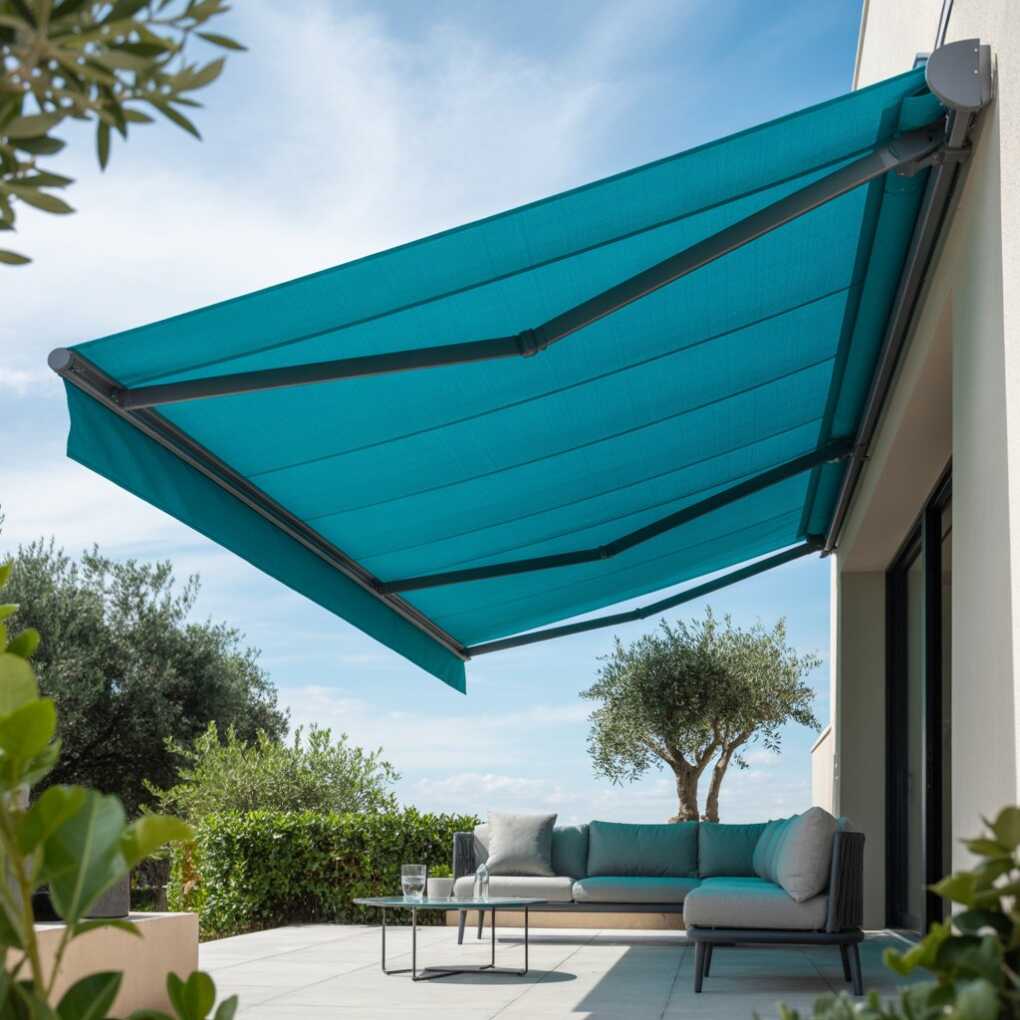When investing in a retractable awning for your outdoor space, choosing the right material can make or break your satisfaction with the purchase. So, what are the benefits of mesh vs solid material for retractable awnings?
Mesh awnings provide better airflow and wind resistance while allowing some sunlight through, whereas solid materials offer complete shade and rain protection but can be more susceptible to wind damage.
While this simple comparison gives you the basic difference, your specific climate and intended use will greatly influence the best material for your situation. Keep reading to discover which scenarios call for mesh versus solid materials to ensure you make the right choice for your outdoor space.

When Should You Choose Mesh Awnings?
Mesh awnings are ideal for windy locations and areas where you want to connect with the outdoors while still getting sun protection. The perforated design allows about 20-30% of sunlight to filter through while blocking harmful UV rays. This makes them perfect for areas where you want to grow plants or maintain natural lighting.
Additionally, mesh awnings are excellent in coastal areas or regions with frequent, strong breezes. The open weave allows wind to pass through rather than creating resistance, which significantly reduces the risk of damage to your awning system during storms.
When Are Solid Awnings The Better Choice?
Solid awnings are the go-to choice when complete protection from sun and rain is your primary concern. These materials block 100% of UV rays and provide waterproof coverage, making them ideal for areas where you want to create a fully protected outdoor living space. They’re particularly valuable in regions with frequent rainfall or intense direct sunlight.
However, solid awnings require more careful consideration during high winds. Most manufacturers recommend retracting solid awnings when wind speeds exceed 20-25 mph to prevent damage to the awning system.
How Do Maintenance Requirements Differ Between Mesh And Solid Awnings?
Mesh awnings typically require less maintenance than solid materials because their open weave allows debris to pass through rather than accumulate on top. They’re also less likely to develop mold or mildew since they dry more quickly after rain.
Solid awnings need more regular cleaning to prevent debris buildup and require careful attention to ensure proper drying after rainfall. However, they’re often easier to clean when maintenance is needed, as their smooth surface can be simply wiped down rather than requiring cleaning between mesh openings.
For both types, an annual deep cleaning with mild soap and water is recommended, but mesh awnings may need less frequent attention throughout the year.
What Is The Cost Difference Between Mesh And Solid Awnings?
Mesh awnings typically cost 10-15% less than solid awnings of the same size due to the reduced material usage in their construction. For a standard 12×10-foot retractable awning, you might expect to pay $300-400 less for a mesh option than a solid material version.
However, it’s important to consider long-term value rather than just initial cost. Mesh awnings often last longer in challenging weather conditions and require fewer repairs, making them more cost-effective despite any price difference. If you’re in Florida, consulting with specialists who provide retractable awnings can help you understand which option delivers the best value for your specific coastal conditions. The final cost will also depend on the specific grade and brand of material chosen.
How Long Do Mesh And Solid Awnings Typically Last?
With proper care and maintenance, both mesh and solid awnings can last 8-12 years before needing replacement. However, the lifespan can vary significantly based on climate conditions and usage patterns.
Mesh awnings often show their age through gradual loosening of the weave pattern and slight fading, but they rarely experience catastrophic failures. Solid awnings typically maintain their appearance longer but are more prone to sudden damage from severe weather events.
Proper maintenance and diligent retracting during severe weather are key to maximizing longevity for either type. Regular cleaning and seasonal inspections can help identify potential issues before they become major problems, extending the life of your awning by several years.
Time To Make Your Choice
Now that you understand the key differences between mesh and solid awnings, take a moment to assess your specific environment and needs. The most important step is to measure the typical wind speeds in your area – if you regularly experience winds over 20 mph, mesh is likely your best choice, while consistently calm conditions might make solid materials more appropriate. Contact your local weather station or check historical wind data online to make an informed decision based on your location’s specific conditions.
